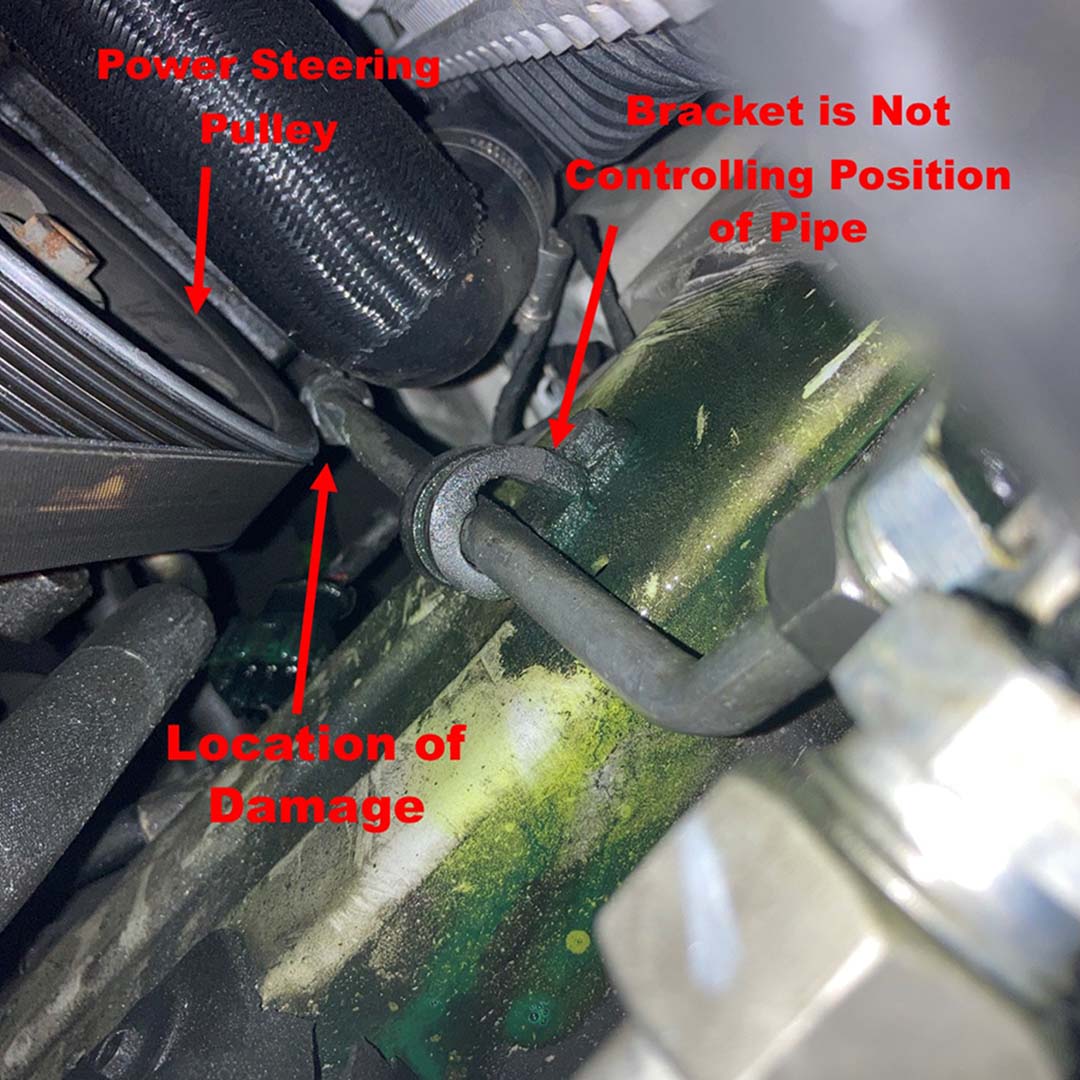Do Sweat the Little Things!

by Gary Edwards, MBCA Peachtree Technical Advisor
The car was smoking on the grid after my 9th run at the Autocross. Literally. Smoke coming out of the left side of the engine compartment. Oh no! I opened the hood and was relieved to see refrigerant spewing out of the pipe from the condenser to the receiver/dryer. At least I could continue running and more importantly, make the 2.5 hour drive home. On a 95 degree day. Without air conditioning. A very uncomfortable drive.
What I found was surprising and disappointing. The refrigerant pipe, which runs vertically up the left side of the engine compartment, was touching the power steering pump pulley, which had cut a slot in the pipe. I went over to my other CLK55 (nice to have multiple similar cars) and noticed on this one, the bracket was holding the pipe away from the pulley. On the failed one, the bracket was in place, but a combination of looseness in the bracket and a bend/poor orientation of the pipe allowed it to ride in contact with the power steering pulley. I had not verified it had enough clearance since I was unaware of this failure mode and had not done significant work in this area. This little thing had caused me to lose all refrigerant on a nearly 100 degree day.
Mercedes engineers think of these little things and design the car to accommodate them. When working on a car, it’s tempting to just hook up the parts and quit, but it’s important to take care of all the little things, the little details such as the brackets and orientation that prevent moving parts from touching vulnerable components.
At another autocross many years ago, I experienced a brake line failure. The steel brake line suffered fatigue failure resulting in loss of the front brakes on an airport autocross course. In this case, some prior owner had omitted the clip that holds the steel brake line to the bracket where it connects to the rubber brake line. The primary purpose of these clips is to prevent the vibration that leads to fatigue failure. The job’s not done until these clips are back in place, another small thing that can lead to disaster in the long term.
How about a little cut or crack in a CV boot? First, they always get worse, but in the long term, centrifugal force will throw the joint’s grease out in a circle all around the joint. Addressed quickly, replacement of the boot is all that’s necessary, but ignored while the joint runs without grease, the joint gets noisy, clicking during tight turns, and then can fail completely leaving you on the side of the road.
When I got my 500E, it would occasionally go into limp home mode for no obvious reason. One day when working on my 400E (only one year removed from 500E and with a very similar engine configuration) I noticed that the throttle linkage moved much more easily than the one of the 500E. It turns out there is a workshop manual procedure to lubricate the throttle linkage (with ATF!). When I did that, this limp home issue went away. These are early fly by wire throttle cars, and they have a backup throttle linkage. If the system senses a difference in what the throttle linkage is saying and the throttle encoder is calling for, it triggers limp home mode. A very simple maintenance procedure will prevent this.










